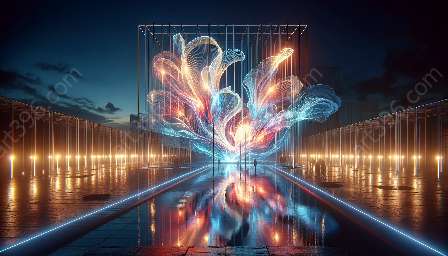Light art installations have become a powerful medium for artistic expression, challenging traditional ideas of what constitutes art. These unique installations harness the power of light to create immersive and thought-provoking experiences. One of the most compelling aspects of light art installations is the way in which they engage with the community, inviting individuals to be active participants in the creation and enjoyment of these works.
The Role of Community Participation in Light Art Installations
Community participation plays a crucial role in the development and success of light art installations. By involving the community in the creation and experience of these installations, artists are able to tap into a diverse range of perspectives and skills, resulting in more dynamic and inclusive artworks. Moreover, community participation fosters a sense of ownership and connection to the art, creating a lasting impact that extends beyond the initial installation.
Engaging the Community in the Creation Process
Many light art installations are designed with community participation in mind from the outset. Artists often collaborate with local residents, schools, and community groups to gather ideas and input for their projects. This collaborative approach not only ensures that the artworks are relevant and meaningful to the community, but also provides an opportunity for individuals to develop new skills and connect with their peers.
Interactive Light Art Installations
Some of the most impactful light art installations are those that actively engage the community through interactivity. These installations invite participants to manipulate light and space, creating a sense of agency and co-creation. This interactive element not only encourages active engagement with the art but also fosters a sense of community and shared experience among participants.
The Impact of Community Participation
The influence of community participation in light art installations extends far beyond the immediate experience of the artworks. By involving the community in the creation process, artists are able to build meaningful relationships and connections with local residents, fostering a sense of pride and unity. Additionally, community participation can serve as a catalyst for broader social and cultural change, sparking conversations and collaborations that extend well beyond the realm of art.
Examples of Successful Community Participation in Light Art Installations
One notable example of successful community participation in light art installations is the Light City festival in Baltimore, where artists collaborate with local communities to create mesmerizing light displays that celebrate the city's diversity and heritage. Another compelling case is the Northern Lights festival in Minneapolis, which invites residents to engage with light art through workshops and interactive installations, fostering a strong sense of community pride and creativity.
Conclusion
Community participation is a driving force behind the success and impact of light art installations. By actively involving the community in the creation and experience of these artworks, artists are able to foster connections, spark conversations, and create lasting impressions that extend far beyond the initial installation. Through community participation, light art installations become not only works of art but also catalysts for social and cultural change.

